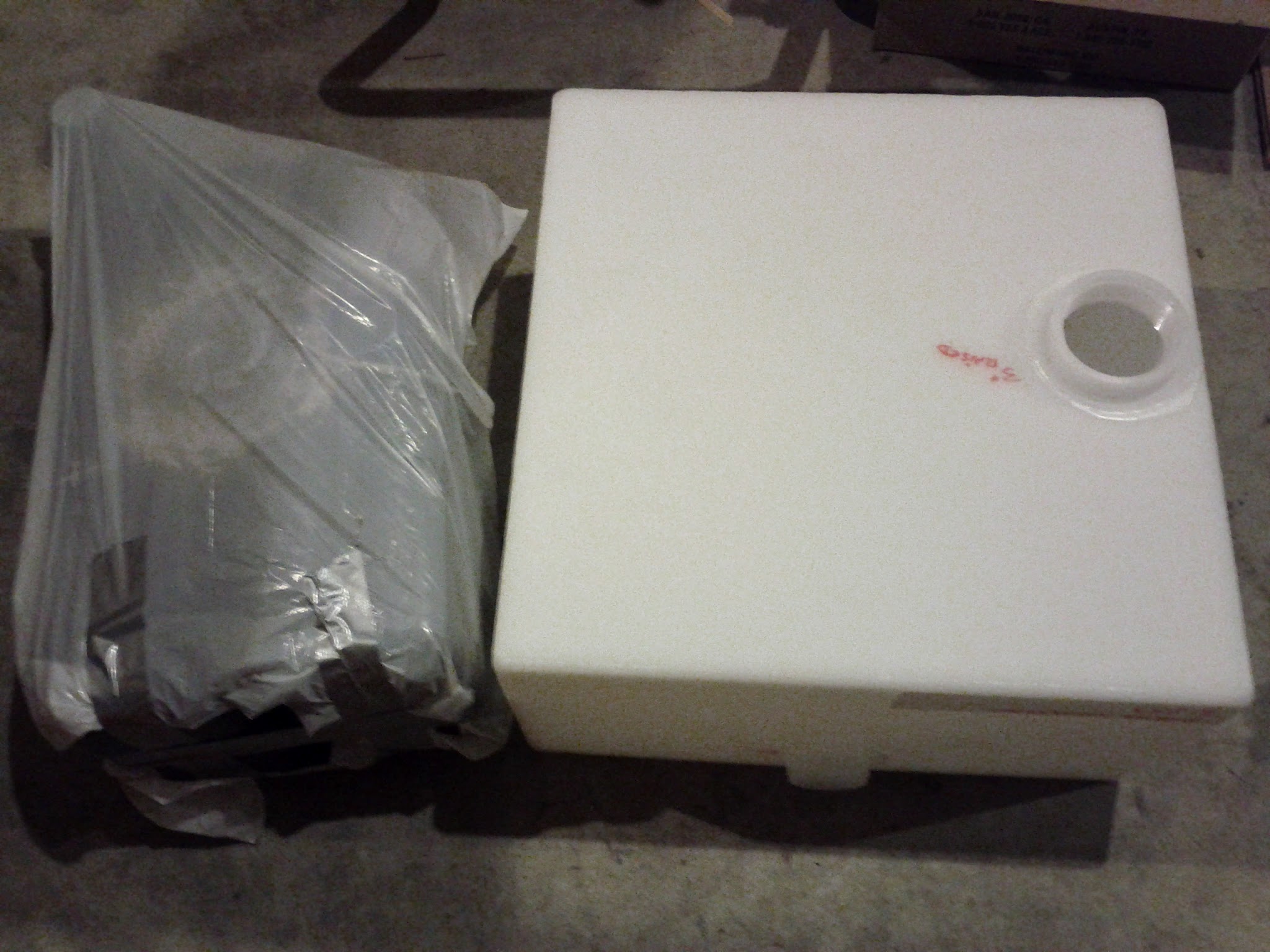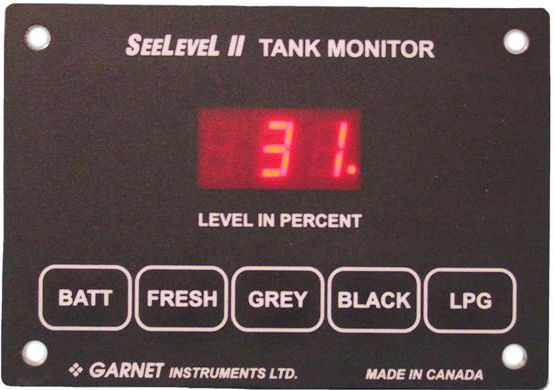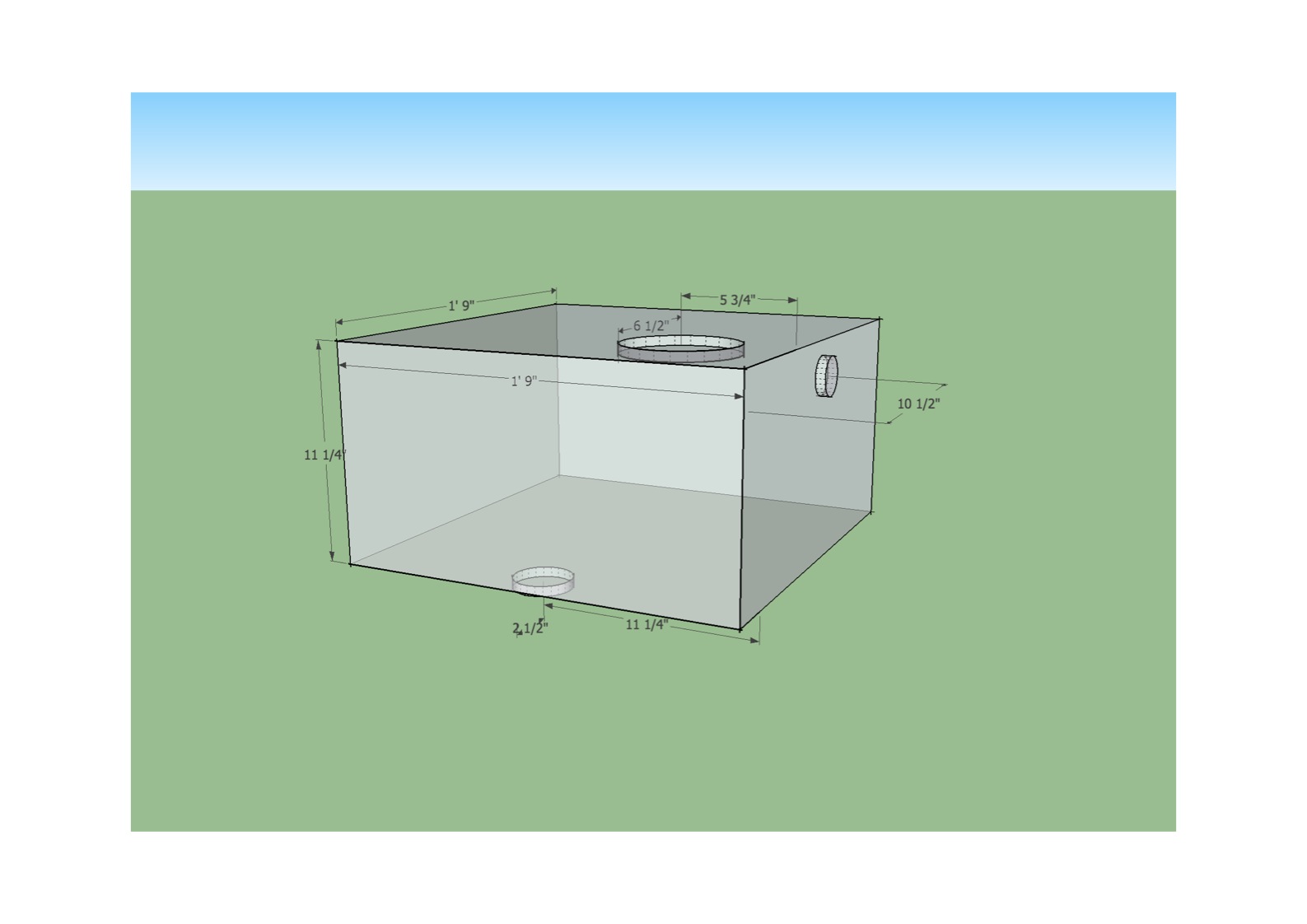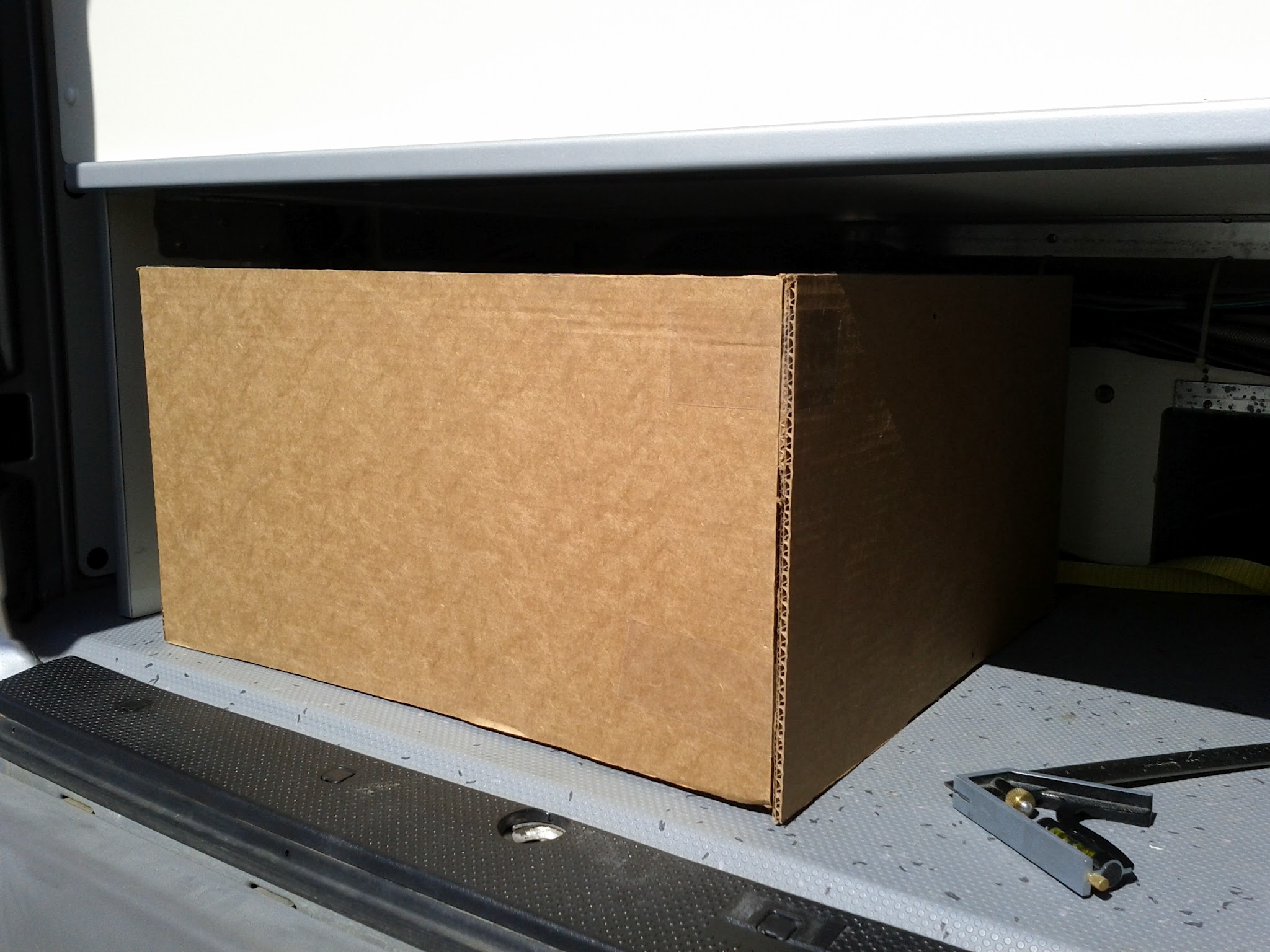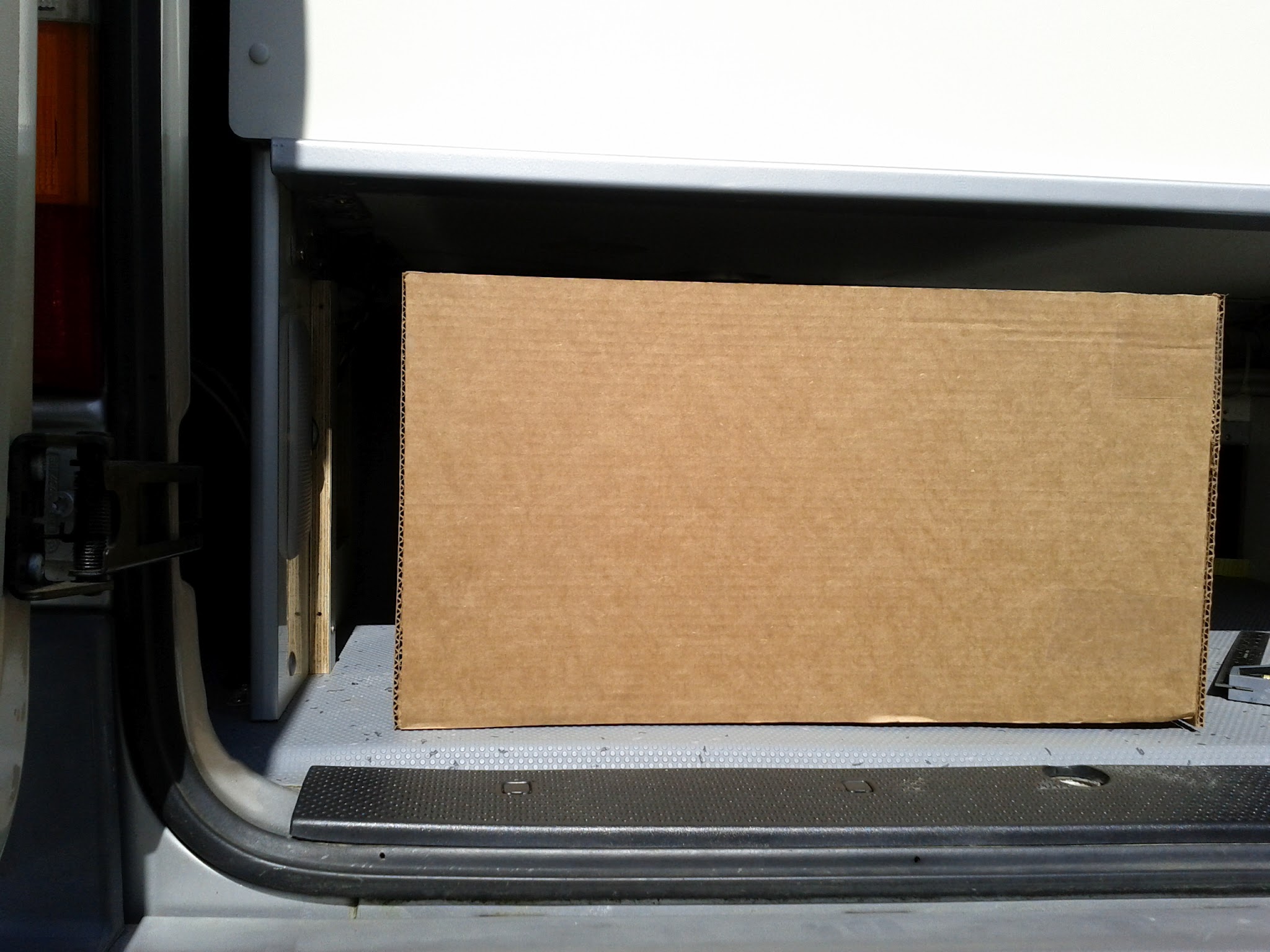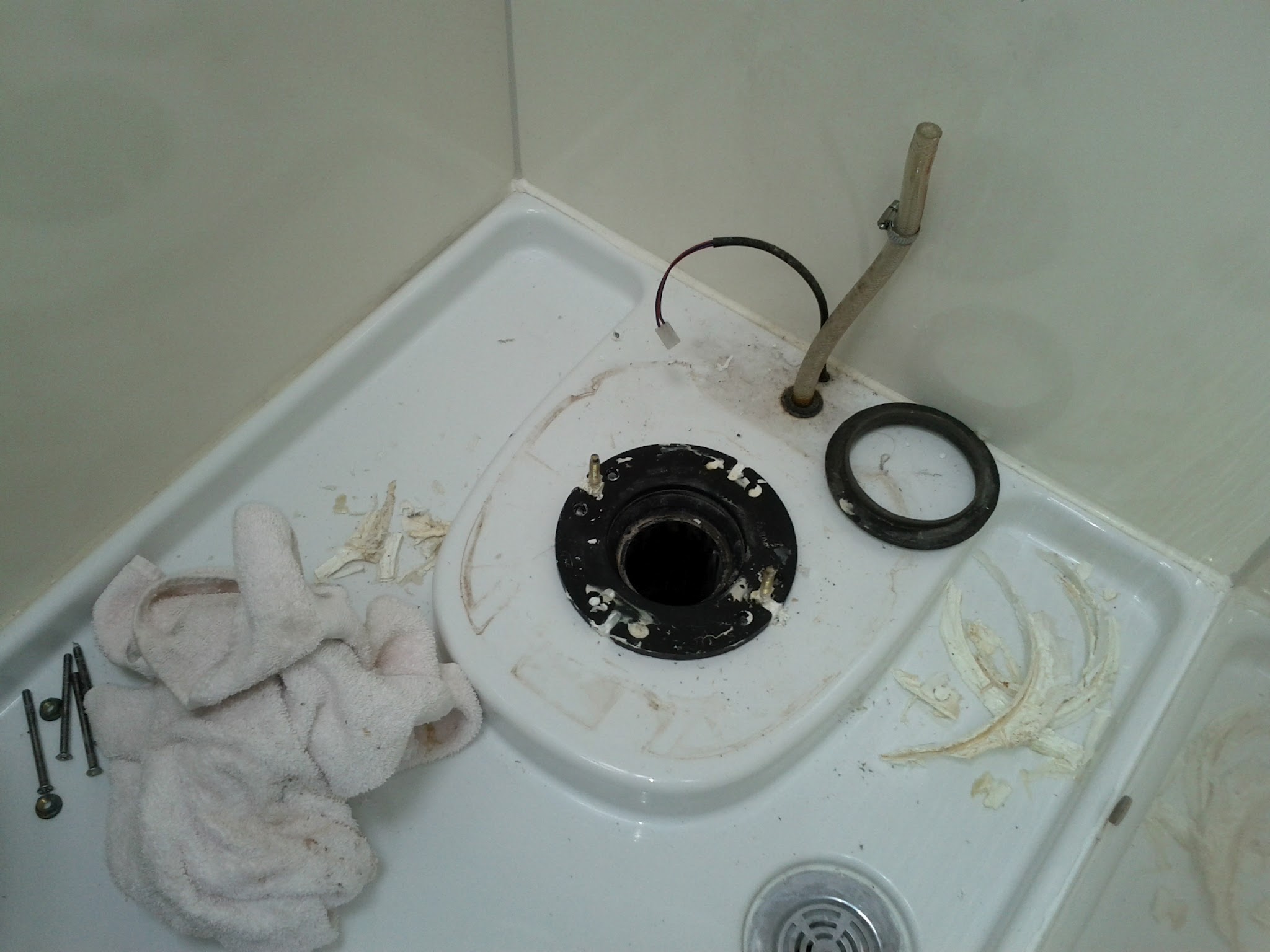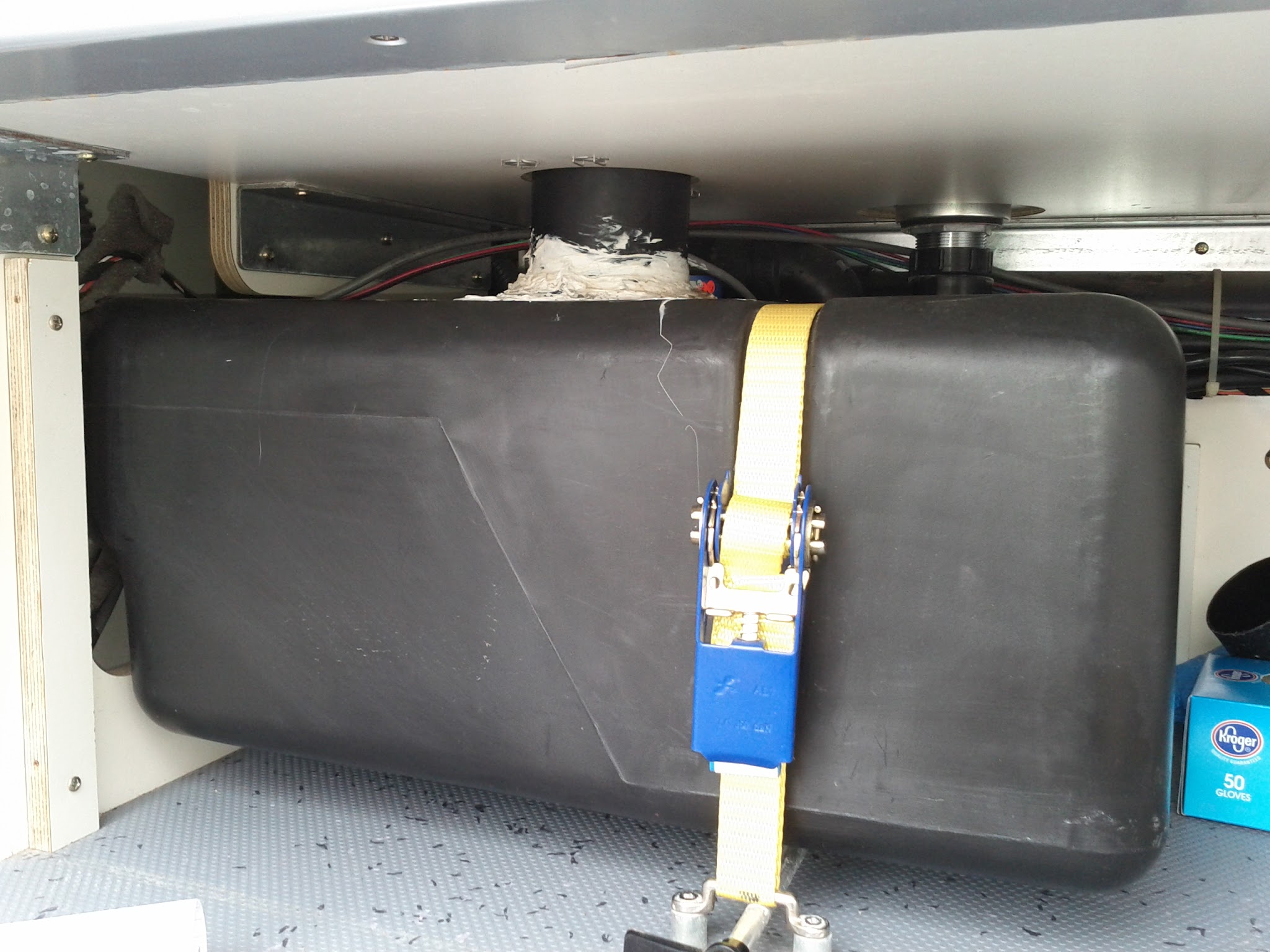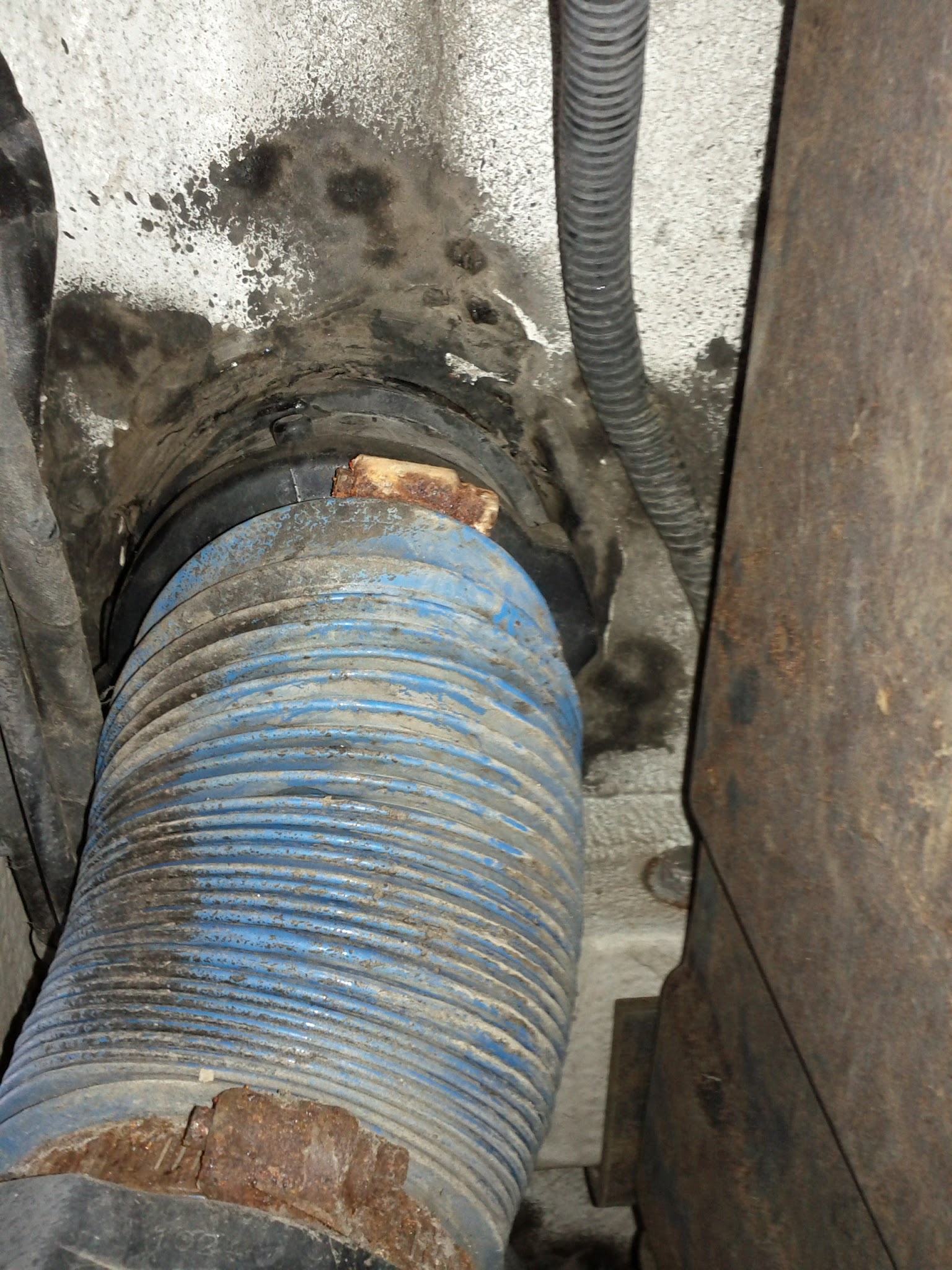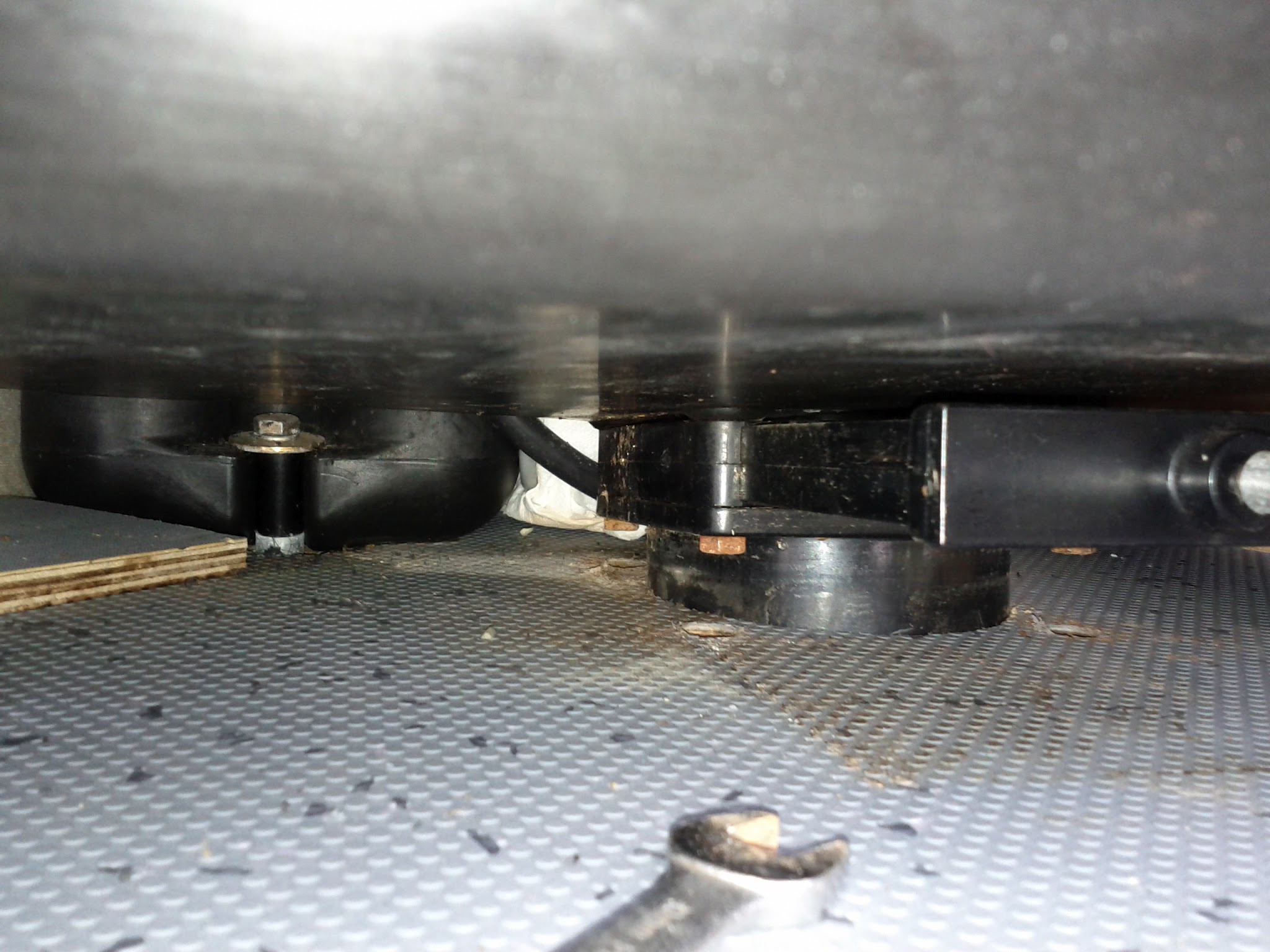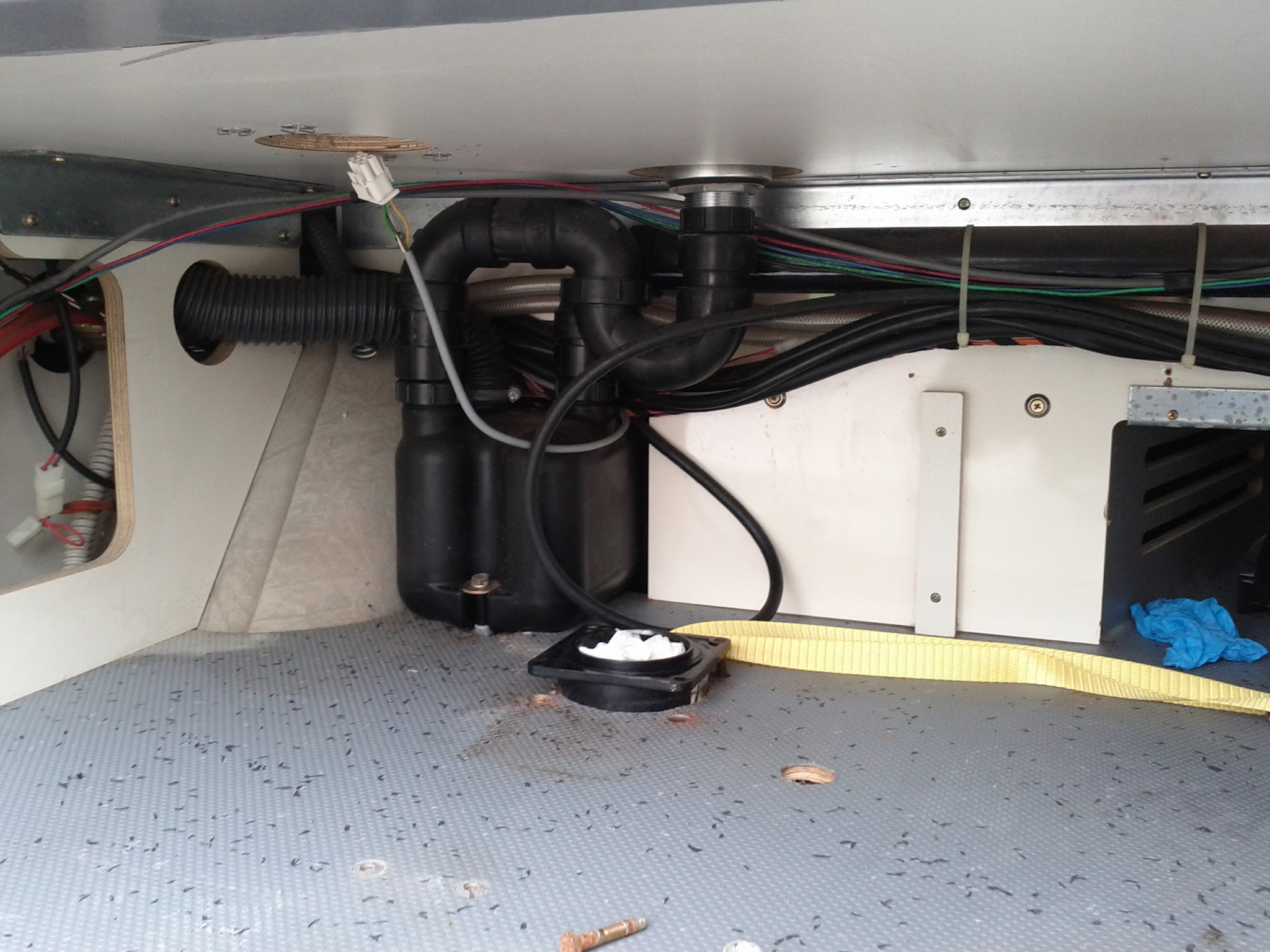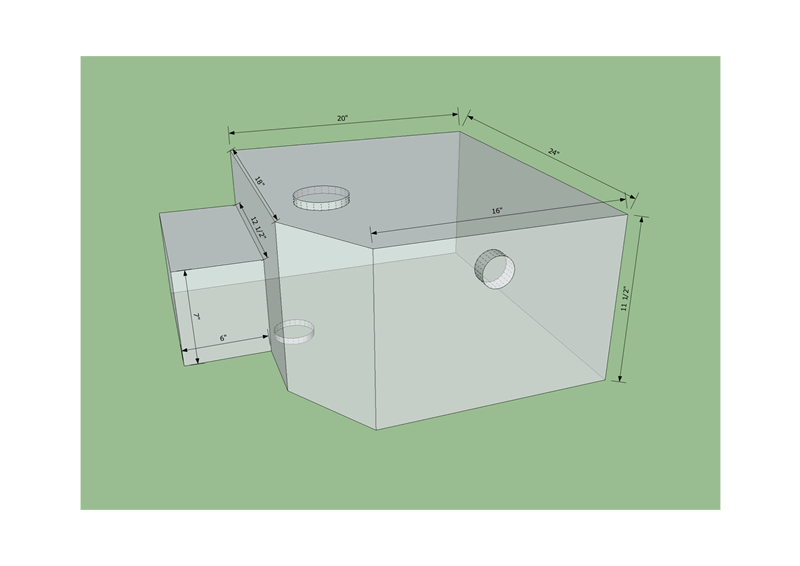Black water tank is here!
My new black water tank has arrived. It’s a 20 gallon tank, where the original was 9.6 – a big improvement! We should be able to stay put in one place for 3-4 days easily, whereas before we’d have to leave and empty our tanks every third day. And considering that emptying the tanks was a messy, leaky procedure, I’m pretty happy to have this replacement system coming together.
The picture below shows the original tank compared to the new one:
Everything looks like it’ll line up nicely. The raised connection on the bottom of the tank (shown on the top in the picture above) doesn’t quite fit inside the hole going through the floor, so I’ll have to enlarge that hole with the jigsaw tomorrow.

